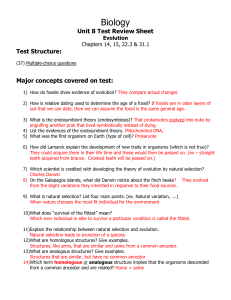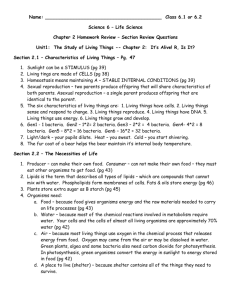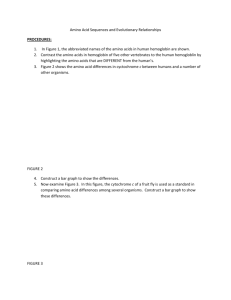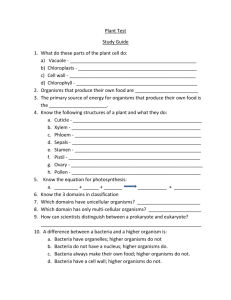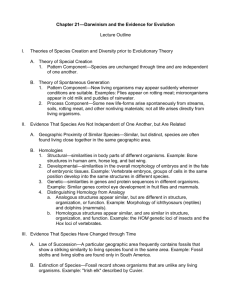Unit Concept review
advertisement
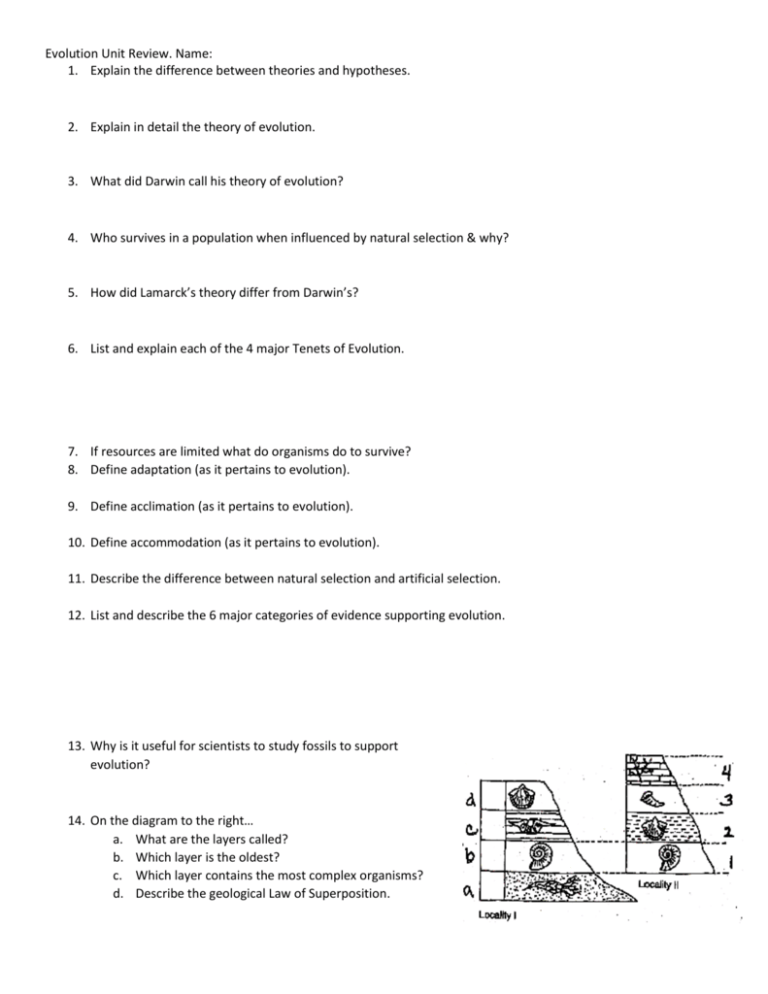
Evolution Unit Review. Name: 1. Explain the difference between theories and hypotheses. 2. Explain in detail the theory of evolution. 3. What did Darwin call his theory of evolution? 4. Who survives in a population when influenced by natural selection & why? 5. How did Lamarck’s theory differ from Darwin’s? 6. List and explain each of the 4 major Tenets of Evolution. 7. If resources are limited what do organisms do to survive? 8. Define adaptation (as it pertains to evolution). 9. Define acclimation (as it pertains to evolution). 10. Define accommodation (as it pertains to evolution). 11. Describe the difference between natural selection and artificial selection. 12. List and describe the 6 major categories of evidence supporting evolution. 13. Why is it useful for scientists to study fossils to support evolution? 14. On the diagram to the right… a. What are the layers called? b. Which layer is the oldest? c. Which layer contains the most complex organisms? d. Describe the geological Law of Superposition. Evolution Unit Review. Name: 15. The structures to the right are similar in basic structure but they perform different functions. What are these called? 16. The hip bone of a whale or the tail bone of humans are unnecessary but still exists. What are these structure called? 17. Do these structures (ref previous questions) support or refute evolution? 18. Why is embryology used in supporting evolution? 19. What is the name for structures that are built differently (bones in bat wings but chitin in butterfly wings) but function the same in unrelated organisms? 20. Refer to the picture to the right. Which group appeared first in evolution? 21. Last? 22. Which organisms appear to have been most successful? 23. Microevolution is the study of what? 24. List and describe the 5 mechanisms of microevolution? 25. Describe what reproductive isolation is. 26. What is speciation? 27. What is the only reasonable way to prove evolution? 28. What are 4 major ways populations can become reproductively isolated from one another? 29. Which organism is most closely related to the giraffe? 30. What traits do both frogs and gorillas share? Evolution Unit Review. Name: 31. A very large population of randomly-mating laboratory mice contains 35% white mice. White coloring is caused by the double recessive genotype, "aa". Calculate allelic (p & q) and genotypic (q2, 2pq, p2) frequencies for this population. List what the frequencies could look like if this population had evolved 1000 generations later in the “new” column. Original New p= q= p2 = 2pq = q2 = 32. The following chart compares the amino acid sequences for 5 organisms. Species ‘A’ is the newest to come into existence. According to the amino acid sequences below, which organisms are more closely related? Species Amino Acids Sequence A B C D E G G G G G D S D D S A V V V V E K A E S K K K K K Differences from A G G G G E 33. Create a cladogram of these five organisms. 34. A young man is going to the hospital to have knee surgery due to a football injury. After the surgery, the patient is sent to the recovery room. All seems to be going well for the first 24 hours after the surgery. However, on the next day the young man has a high fever. The doctors realize that he has contracted a bacterial infection from the surgery. The young man is given antibiotics to help kill the bacteria. The next day the doctors give him another antibiotic because the first one does not seem to be helping. Unfortunately, this antibiotic is not helping either and the bacterial infection persists. Using your knowledge of evolution, explain (a) WHY antibiotics that that normally kill certain bacteria are no longer working and (b) HOW the bacteria developed resistance. Evolution Unit Review. Name:



